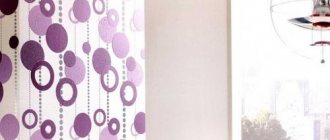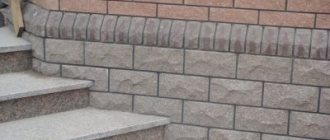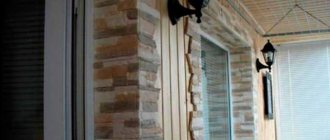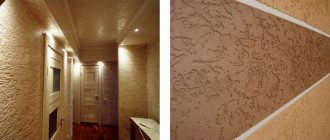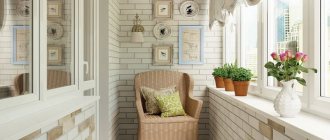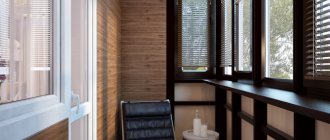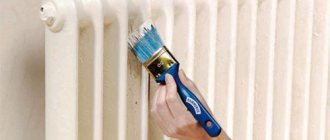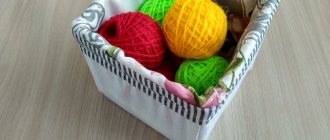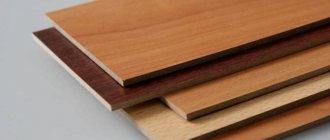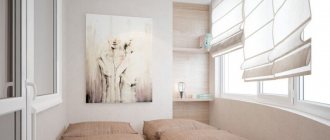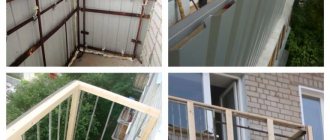To decorate a balcony with decorative bark beetle plaster, you need to follow a number of simple recommendations. We will answer which ones in this article.
Overhaul of a balcony means reconstruction, including, among other things, glazing of the balcony, its sealing, insulation and decorative finishing. Very rarely this set of construction activities is done separately. Repairing the entire balcony at once and “turnkey” (from A to Z) is the most correct choice, since if you divide such a balcony repair into stages, you get a huge amount of wasted time preparing each stage, accepting materials, intermediate cleaning, and so on.
Finishing work is carried out at the final stage of balcony repair and usually attracts increased attention. After covering the external fences (if any), and arranging the internal rough lining, it is time to finish the walls. Instead of boring wallpaper or PVC panels, you can apply a decorative plaster coating. Bark beetle plaster is one of the most recognizable among them.
This is far from a new type of finishing materials, but it began to be used on balconies relatively recently. The prerequisite was the emergence of new houses with relatively wide loggias, which are quite suitable for such improvement.
The Bark Beetle has characteristic features that cannot be confused with anything. Surely many have seen a coating on the facades of buildings that looks like a corroded surface of wood. Imitation of unidirectional wormholes and traces of shashel movements under the bark has received a rather aesthetic appearance, and has found application in the field of decorative finishing. Bark beetle is used for finishing both “residential” and cold balconies.
Advantages of decorative plaster for finishing a loggia (pros and cons)
The balcony is the most pleasant place to relax for the whole family, not only in summer, but also in other seasons. Therefore, it should have a truly cozy and aesthetically attractive appearance. A special role in its design belongs to the finishing.
The main advantages of decorative plaster are:
- attractive appearance;
- very long service life;
- profitability of use;
- abrasion resistance that balcony plaster has;
- low degree of fire hazard;
- solidity;
- low sensitivity to external influences;
- plaster on the balcony is perfectly combined with other materials;
- no risk of subsequent deformation;
- resistance even to increased ultraviolet radiation;
- efficiency, etc.
Plastering a balcony also has its negative side. It is often associated with the complexity of applying the material and too many choices of decoration techniques. This can be difficult for an inexperienced person.
Features of the material and its types
Finishing a balcony with bark beetle can be done using two types of mixtures:
- acrylic , sold in ready-to-use form;
- gypsum , in the form of a dry mixture.
In general, this material is a composite plaster with small granules - pebbles. Marble or other mineral chips can be used as granules, the size of which is in the range of 0.1-3.5 mm, and the base is always cement. Depending on the size of the crumb, the grain size of the material varies. The consumption of decorative plaster also depends on the size of the fraction - the larger the grain, the more mixture will be required to finish a square meter of surface.
The mixture is most often produced in white, but can be easily painted , and therefore its design possibilities are very, very extensive.
Types of decorative plaster - which is best for finishing a balcony
Construction stores offer a very large selection of different types of decorative plaster that are suitable for treating a balcony or loggia. But the materials differ in their chemical composition and the type of resulting decorative coating.
Not every person knows how to choose the right quality mixture. The manufacturer always includes detailed instructions in the packaging of the product. But before starting repair work, it is better to know the features of the material and the technique of its application. Moreover, any decorative plaster on the balcony has special properties inherent only to it.
The first thing to consider is the difference in external conditions (temperature, etc.) and in the room.
Therefore, when plastering a balcony, it is necessary to take into account the presence of:
- Rain.
- Droughts.
- Unfavorable environmental factors.
- Morozov.
- Temperature changes.
- High humidity.
- Risk of mechanical damage to the coating due to hail.
- Sun rays, etc.
Due to exposure to dust, moisture, light, etc., such structures require repairs.
Decorative plaster for balconies varies in the presence of binder components and can be:
- acrylic;
- mineral;
- polymer;
- silicate;
- silicone.
Mineral plasters on the loggia
Decorative plaster for loggias has been used for a long time. There are gypsum, lime, cement and other types of mortars. All of them have very high technical and operational data. Therefore, such materials are used more often than others. The mixtures are inexpensive and very convenient for any repair work.
If the winters are mild, the compositions will last a long time. But it is better to take them for finishing loggias. Such mixtures cannot tolerate thermometer readings that are too low.
Gypsum plaster on the balcony is applied to level surfaces or decorate interior spaces. It hardens quite quickly and becomes very durable. In addition, the finishing mixture adheres well to the walls and makes them breathable.
Gypsum is hypoallergenic, plastic, and easy to apply. With its help it is possible to create even complex decorative reliefs.
The disadvantage of the material is its high hygroscopicity, due to which it will not last too long. Therefore, before using it, it is advisable to introduce hydrophobic modifying additives into the composition. The top coating must be reliably protected with a waterproof agent. Therefore, gypsum is most often used for glazing a balcony, and not for decorating a loggia.
Lime for interior decoration imitates natural stone. The mixture is much more resistant to moisture, but it also needs additives. The material, like gypsum, does not cause allergies and has high plasticity. This composition has disinfectant properties. Therefore, you should not be afraid of contamination of walls and ceilings with rot, fungus or mold. But lime is not as reliable as other materials. Therefore, it is more often used for finishing loggias.
The white cement-sand composition with the addition of plasticizers is the most durable of all the others. Even high humidity will not spoil it. The mixture is not afraid of sudden temperature changes in the off-season. This material will last a long time.
Textured plaster is often used to decorate interior spaces, creating a unique effect. By applying it, the surface is given a special originality. The types and colors of the material allow you to choose the desired shade. It will last a very long time due to its high performance properties.
Acrylic for wall decoration
The composition is based on acrylic resins. When applied, the coating becomes moisture-resistant and durable. It is easily washed off from any contaminants, but at the same time quickly adsorbs them. The material is characterized by increased elasticity.
Simply apply it to surfaces such as:
- gas block;
- tree;
- brick;
- mineral wool;
- OSB;
- foam block;
- polystyrene foam, etc.
The decoration looks beautiful and original. It does not crack under vibration. Before you learn how to plaster a balcony with acrylic, you need to take into account its significant drawback: the material is fire hazardous.
In addition, it quickly accumulates static electricity and fades quickly in summer. The composition does not allow steam to pass through well, so fungus or mold often appears on the walls.
Silicone balcony mixtures
The basis of the mixtures are silicone resins. They consist of rubber with reduced molecular weight or classic organosilicon polymers. This material is highly elastic. While the composition has not completely hardened, an attractive relief can be created on its surface.
The plaster is easy to apply and suitable for any type of base. They are very durable and will last a long time, up to several decades. They are easy to apply as they have high adhesive properties.
Silicone has high vapor permeability. It is resistant to moisture and other adverse external factors. The composition is a breathable material and does not disturb the general microclimate of the loggia. The disadvantage is that it is very expensive.
Break - in the corners
Before you start finishing, decide which bark beetle you will be working with. Decorative plaster is produced in two types:
- Acrylic is initially ready for finishing work, more expensive,
- Gypsum is sold as a dry mixture, which must be diluted with water (t -15 – 20 °C). To mix the solution, use a drill with a “mixer” attachment. After this, the mixture is left to “ripen” for 5 minutes, then the procedure is repeated.
Note. The prepared solution should be used within an hour. It is no longer possible to add water during the work. To prevent the mixture from hardening, stir it occasionally.
Types of decorative facade plaster
Experienced craftsmen recommend applying the material with a stainless steel float, positioning it at an angle of 60 degrees to the working plane, or with a rigid metal spatula of a convenient size. Apply the finish in the same way as putty - stretching it over the surface.
The main thing to remember is that the thickness of the applied layer should be equal to the diameter of the grain. This can be determined this way: small grooves appear on the wall.
Note. If you need to take a break, do not abandon what you started in the middle of the surface - the joint will be noticeable later. Better get to the corner.
Grouting of the coating begins after about 15 minutes - by this time the plaster has already “set” (the solution has stopped sticking to the tool). It is important not to miss the moment. However, if you hesitate and the plaster has dried out, “revive” it with a spray.
Grout with a plastic or wooden float. Up and down movements, for example, form vertical stripes (they are often called “rain”), while circular movements produce a “lamb”.
Options for finishing a balcony with your own hands - how to plaster
Decorative plaster can be coarse-grained or fine-grained. Its relief is determined by the composition and size of the additives. Large-relief mixtures must be applied with a special tool in a not too even layer. If a loggia is being processed, the decorative plaster should have an additional texture. After it dries, the surface will resemble untreated stone in appearance.
Fine-grained compounds are applied to pre-leveled walls. Therefore, it is better to use them if you have extensive experience in finishing work.
The walls must first be thoroughly puttied. After they dry, they should be sanded. If desired, methods for creating small decorative details and various reliefs are used. After the material dries, even the slightest defect will be visible on it.
The surfaces will become smooth and then you can give them the required texture. The final coating is recommended to be painted or tinted. The use of rollers or brushes will make it more aesthetically pleasing.
If you use plaster on balcony walls with imitations, then it is better to choose wood, artificial stone on the floor or walls, or tiles.
Features of plaster for cold glazing
When finishing a cold balcony, special care is required. It is due to the fact that every time the door to the room is opened, a warm stream of air condenses on the surface. Therefore, it is better to first coat the walls and ceiling with a moisture-resistant compound or water-repellent primer.
You cannot leave the door to the room open with the windows closed unless the coating is protected with waterproofing plaster.
The walls on the balcony are decorated with decorative plaster at an outside temperature of +8°C. It is better not to choose a period of weather changes to start work. Then the applied layer of plaster will be more durable. At the same time, you should consider ways to insulate the outdoor space.
Warm plastering of the balcony with plaster
Insulated balcony options resemble an additional room. Therefore, the change of season is not scary for them. In order to insulate a glazed balcony, it is advisable to cover the walls with sheet material.
Polystyrene foam, polystyrene foam or foil insulation are better suited for this. You should not use mineral wool, as it provokes the formation of condensation on the walls.
Any composition for interior decoration is suitable for treating a loggia with decorative plaster.
The coating application scheme should be presented as follows:
- First, the wall is carefully prepared.
- Grooves are made under the electrical wiring. Then the wiring is laid, sockets are installed, and switches are designed.
- The surface is primed at least 2 times. Wait for it to dry completely.
- External walls are sheathed with insulation. Vertical seams are laid in advance with an offset. To do this, you need to move the upper horizontal rows of slabs a little.
- The seams must be sealed.
- Using a special grater, protrusions are removed from the surfaces of the sheets.
- First, the sheets are mounted and secured on the external fence, then the side surfaces are covered with them.
- The wall of the house is insulated only in cases of special need, for example, if there are cracks. If the surface is curved, then special structures are installed on it. You should constantly check whether defects or holes have appeared in it over time.
- A leveling plaster solution is applied on top of the polystyrene foam. Putty is also used. Then a reinforcing fiberglass mesh is applied. It needs to be pressed into the layer of solution.
- After drying, the plaster is leveled again.
- Before the final stage, the rough finish must be thoroughly dried. If you plan to wallpaper or paint surfaces, additional sanding is also required.
- It is better to consult a specialist about what paint to paint your balcony.
External plastering of balconies and loggias
When performing external insulation from the street side, the room remains more spacious. The owner of the balcony will not be able to complete such finishing on his own. Most often it is carried out by industrial climbers. Coating the balcony with plaster is also done by repair specialists.
Decorating the walls of the balcony
This type of work is carried out after covering the balcony with thermal insulation materials. Only then will the finish be truly reliable and durable.
Old surfaces are completely cleaned and structures are updated. It is also necessary to inspect the joints and seams. Finishing a balcony with decorative plaster is often done with coarse-grained compounds. The most suitable material is a material with a large grain of “bark beetle” on the balcony.
Warm balconies are treated differently than cold ones. If there are frequent frosts in winter, it is better to use fine-grained mixtures for coating. An option with a small grass ornament or a wet silk effect is perfect.
Preliminary preparation
Before applying bark beetles, it is necessary to carry out preliminary preparation of surfaces. It is necessary to clean them from dust, grease, remove old coating, and get rid of mold. The base is leveled using ordinary plaster or sand-cement mortar. In the case of interior decoration, the walls can be additionally plastered in one or two layers.
Before proceeding directly to finishing the balcony, the walls are primed with a special paint or acrylic primer to match the future finish (after which the surface should dry for 4-6 hours)
Tools for decorating balcony walls
Before starting work, you should stock up on special tools.
These include:
- roller;
- bucket for plaster mortar;
- rags;
- sponge;
- trowel;
- brush;
- means for applying a pattern for painting;
- masking tape;
- mixer;
- plumb line;
- rule;
- cutter;
- grater;
- putty knife;
- stamps, etc.
It is especially important to choose the right tools for decorating with bark beetle plaster.
Technologies for applying decorative plaster to walls and ceilings on balconies
Those who have not yet acquired experience in applying decorative plaster should strictly follow the instructions that come with the packaging of the composition. You must first carefully study the description and characteristics of the material. You should not ignore them, otherwise the work will be done poorly.
It is very useful to know what weather to choose to start work. It is advisable to use the warm season for repairs. You cannot cover walls with plaster during cold spells at temperatures below +5 °C.
The hot summer season is also not the best time to apply the material. When the sun's rays fall directly on the finish, it must be constantly protected from them.
Autumn with frequent rains will not be very successful either. Both the solution and the finished surfaces will have to be protected from moisture until they harden.
When carrying out work, a number of stages are followed:
- Preparation.
- Bringing the solution to the required state.
- Applying plaster.
- Finishing layer.
Preparing the surface for decoration
First, you need to completely remove old coating, paint, mold, whitewash, wallpaper, and peeling plaster from the surfaces of the balcony or loggia.
If dust has accumulated on the wall, the adhesive properties of the solution are reduced. Therefore, everything must be thoroughly washed. Any grease stains or rust will quickly penetrate the new finish, ruining it. Therefore, there should not be any extra inclusions on the surface.
Basic steps:
- All metal parts are removed. If they are firmly strengthened, then they are coated with an insulating compound or oil paint.
- Doors, window frames, recesses for switches and sockets are sealed with masking tape.
- The current is turned off.
- The brick layer should be treated specially. The seams in it are deepened by 1 cm. Then the entire wall is sanded with a metal brush.
- Smooth concrete is covered with notches.
- The cracks are filled with cement. If they are large, then a reinforcing mesh is applied to them.
- Moisture-hazardous areas are waterproofed.
To improve the adhesion of the mortar to the base and strengthen the wall surface, a double deep penetration primer is required. Putty is used if necessary. Then the surface must be thoroughly dried.
Applying decorative elements to the wall - step by step
When the loggia is already fully prepared for repairs, decorative plaster is applied to the wall in succession.
For example, finishing a balcony with “bark beetle”:
- All work continues from bottom to top. The solution is transferred from the bucket to the trowel using a spatula. The tool is held at an angle to the wall.
- Then the entire composition is transferred with strokes. The thickness of the layer should correspond to the grain size of the filler.
- The remaining mortar on the trowel is removed into a bucket with a spatula.
- Then a new layer is placed. Carefully smooth it out, making sure that it does not compact. The composition is no longer scraped into the container, as it hardens quickly (after about 7 minutes). The verification test is hand sticking. If nothing like this happens, it means the material has set.
- Afterwards, a border ornament is formed using a grater. The tool is carried out in the required direction using circular or linear movements. Large grains fall between the base and the moving grater, leaving grooves.
What's the best way to finish interior walls?
The stage of applying the final coating is very important in order to plaster the walls on the balcony. Waxing, varnishing or painting are most often used here. This coating makes the surface more reliable and gives it a pleasant appearance.
If work is carried out on a cold balcony, painting will protect it from precipitation. The paint film will smooth out the sharpness of the protrusions.
The material is selected for the base of the plaster. If acrylic is used, then the dye should be the same. The work is completed in 1 or 2 passes. The dye and varnish are applied with a brush after the surfaces have completely dried. It is better to use clear or tinted varnish, as it is easier to match it to the base of the plaster.
Preparing the bark beetle mixture for application
List of necessary plastering and painting tools for finishing a balcony:
- Bucket.
- Plastic grater.
- Spray.
- Mixing attachment for an electric drill, and the drill itself.
- Painting spatula for spreading the solution after its preparation.
- Roller and container for primer and then paint.
How much dry mix should I buy? The consumption of dry plaster per 1 square meter will be 2.5 - 4 kg. It is better to rely on the information from the instructions for use of the mixture. But it is advisable to make a purchase with some reserve (usually 10%).
It is necessary to carefully study the instructions for using the plaster, otherwise you can easily spoil the raw materials. But the general rules are the same. The dry mixture is gradually poured into water at “summer” temperature. The ingredients are intensively mixed using an electric drill and a special “mixer”. This is an attachment for a regular electric drill. This mixing will prevent the formation of unwanted lumps.
The well-mixed mass should be left covered for 15 minutes to allow it to “infuse.” Then the mixture is stirred again with a mixer until a homogeneous mass is obtained. It looks like puree with an even color shade.
It is advisable not to add water to an already mixed mixture. This can provoke stratification of the solution and the service life of the Bark Beetle is reduced. The finished mass must be used for its intended purpose within three hours.
Successful examples in the interior
Any balcony or loggia with decorative plaster applied looks stylish and elegant.
In order for the apartment owner to imagine the design options for outdoor premises, we can note the advantages of different coatings:
- Venetian plaster looks good on the walls. It gives a balcony or loggia true European splendor and visually expands even a very small space.
- Fine-grained, bright plaster appears to be decorated with genuine taste. The floor and walls of the balcony echo each other with their original texture.
- Finishing the balcony with decorative stone in combination with decorative plaster - this option is always appreciated by professionals.
- The decoration of the balcony in the style of the cozy atmosphere of a London coffee shop is reminiscent of a scenic drawing from a canvas of a genre painting by a British artist. In this poetic spirit, any outdoor space always looks impressive and original.
- Bark beetle plaster with shallow decorative grooves visually gives the coating volume and a pleasant piquancy.
Finishing a balcony with decorative plaster has numerous advantages. Therefore, it is recommended to choose it when carrying out repair work on external premises.
Dry and paint
The optimal temperature for drying plaster is 5-30. °C (1-3 days). On an unglazed balcony, cover it with polyethylene for the first couple of days to protect it from rain and sun.
After this, the decorative coating can be given the desired color using silicate or acrylic paint. However, in the latter case, the drying time of the walls increases to 14 days. To paint the surface, use a roller, a wide brush, or a special mitten - your choice. Apply paint along the furrows, and in no less than two layers.
Note. Experienced craftsmen advise that with each new “pass” of the roller, grab a couple of centimeters of the already painted surface - the tone will be more even. Excess paint flowing from the grooves is carefully “collected”. If you find unpainted areas at the finish, finish what you started with a brush.
If you are working with ready-made polymer (acrylic) plaster, then the pigment is added to it before application, and not after (the process is called tinting). It is virtually impossible to do this “manually” - it is difficult to get the same tone in different buckets. Typically, tinting is carried out on machines using computer technology.
To summarize, those who are constantly engaged in repair work speak well of the bark beetle. However, beginners can also cope with this task, provided they follow all the recommendations. Properly executed finishing will last a long time and will give the balcony a unique look.
